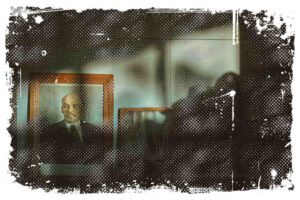It all started on April 28, 1986, around 5:30 a.m., when the SPSP measuring station in Mikołajki noticed a sudden surge in air pollution. Gamma radiation levels went up several times, and beta radiation was about 700 times the usual level. This worrying news was immediately reported to the CLOR (Central Laboratory of Radiological Protection) in Warsaw.
Just a few hours later, at 10:00 a.m., an alarm was sounded. Initially, everyone thought it was a nuclear explosion near the Polish border. However, a closer look at the isotope composition pointed to contamination from a nuclear reactor accident.
It wasn’t long before other SPSP facilities started reporting in, helping track the radioactive cloud’s movement over the north-eastern provinces.
Lack of Information from USSR Authorities about Contamination
CLOR quickly formed a team to monitor the situation continuously and come up with recommendations to protect the public’s health. Despite existing agreements that required immediate sharing of information in such scenarios, the USSR authorities did not provide any data.
↳ PRO TIP: Do you like traveling? Then before you buy any ticket or book an attraction, check if it's available in this worldwide Viator Database. You may save a lot of money and time. No need to thank me :)
Meanwhile, at the Forsmark power plant in Sweden, a significant increase in contamination was detected, but there was no sign of damage or leaks. This indicated that the pollution cloud was coming from the Baltic Sea, specifically from the USSR territory.
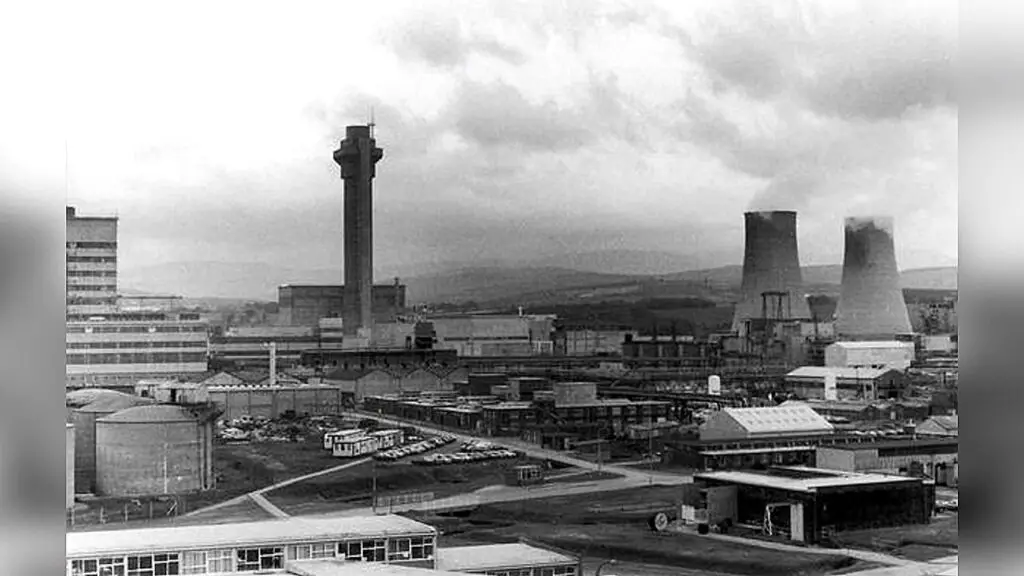
BBC radio even reported an accident at a nuclear power plant somewhere in the European part of the USSR, probably in Ignalina.
Air Samplings in Poland and USSR’s Telegram
CLOR then requested the Air Force Institute of Technology to conduct flights along the eastern border and collect air samples from different altitudes, ranging from 1 to 15 km. Later in the evening, a very brief telegram was received from the USSR authorities:
There has been an accident at the Chernobyl nuclear power plant. One of the reactors has been damaged. Measures have been taken to remove the consequences of the accident. Help is provided to the victims. A special government commission has been appointed.
That was it. Just a short message with minimal details, leaving Polish authorities with many unanswered questions. If you want to know more about the steps taken by the Polish government and the aftermath of this disaster, stay tuned for the next part of this story.
The World Reacts to the News
The news about the accident was the seventh item reported on the evening edition of the TV news “Vremya.” Western radio and television stations were filled with speculations and rumors as contamination was detected in many European countries.
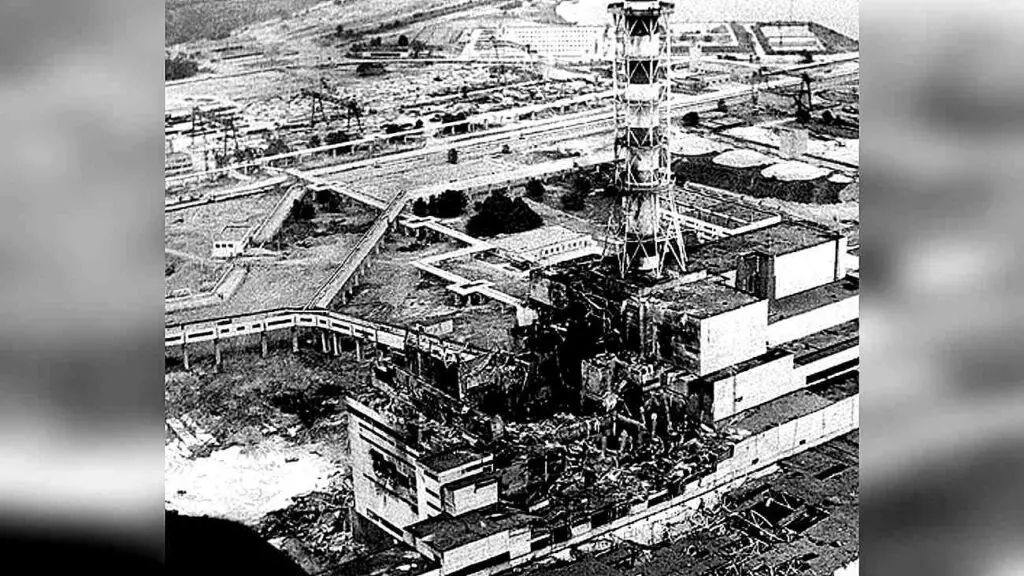
The Russians reluctantly admitted to the accident and the death of two plant workers but did not inform about the scale of the disaster, which exceeded all imagination of Soviet experts.
Emergency Meeting in Poland and Action Plan
On April 29, around 1:00 a.m., a meeting of members of the Politburo, the government, and the army command began in the Central Committee of the Polish United Workers’ Party.
At 4:00 a.m., prof. Zbigniew Jaworowski from CLOR, prof. Zenon Bałtrukiewicz from the Head of the Health Service of the Ministry of National Defense, and Mieczysław Sowiński, president of the Polish Atomic Energy Agency (PAA), joined the meeting.
A few hours later, a Governmental Commission was appointed, and a plan of action was established. The primary aim was to protect the health of the population, especially children.
It was crucial to give children stable, non-radioactive iodine as soon as possible to block the absorption of iodine-131 and protect their thyroid glands.
Due to the need to administer stable iodine to millions of children simultaneously, it was decided to use Lugol’s iodine, an aqueous solution of potassium iodide and elemental iodine.
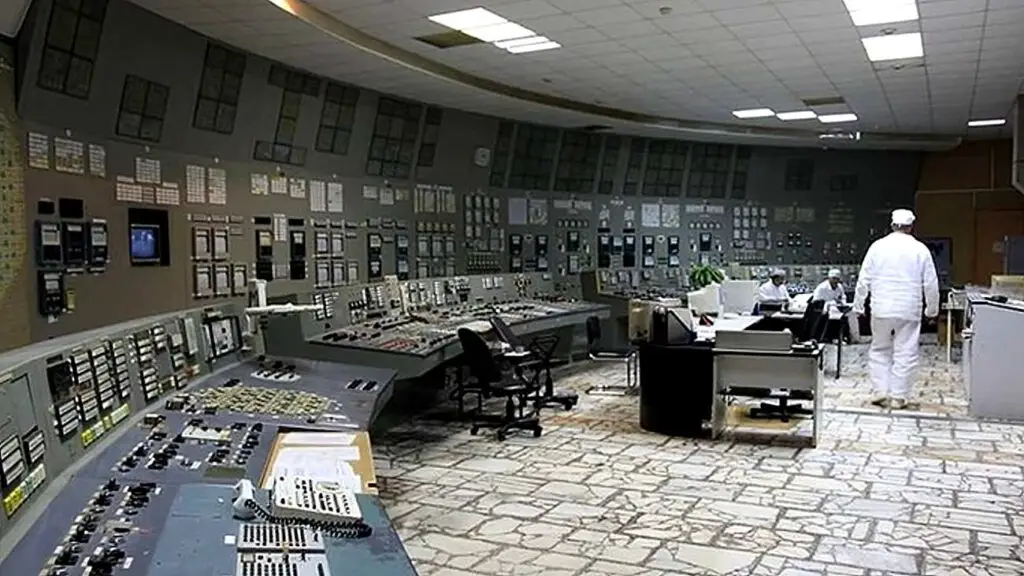
Recommendations and Measures in Poland
In addition to administering iodine, it was recommended to:
- Suspend cattle grazing and switch to powdered milk (or import the right amount from abroad if unavailable).
- Limit the consumption of vegetables and fruits and inform about the need to wash them thoroughly.
- Suggest that children stay at home for a few days, avoid school, keep windows closed, and wash the streets.
- Cancel the May Day celebrations.
Years later, Prof. Jaworowski stated that the recommendations were overly rigorous. However, in the absence of information from the USSR, it was necessary to act “with a margin of caution.”
The large-scale action of administering Lugol’s solution was organized very efficiently. However, canceling the May Day celebrations turned out to be unrealistic due to systemic conditions. Besides political considerations, the authorities feared causing panic across the country.
Contamination Area Monitoring and Effects
On April 30, air pollution remained very high, especially in the morning. However, towards the evening, the radioactivity decreased noticeably. Over the next few days, it continued to decrease, mainly due to the reduction of emissions in Chernobyl itself and a change in the wind direction.
Unfortunately, some regions, like the Opole and Nysa regions, were more heavily contaminated with caesium-137 due to intense local rainfall.
Contaminated Areas – Map
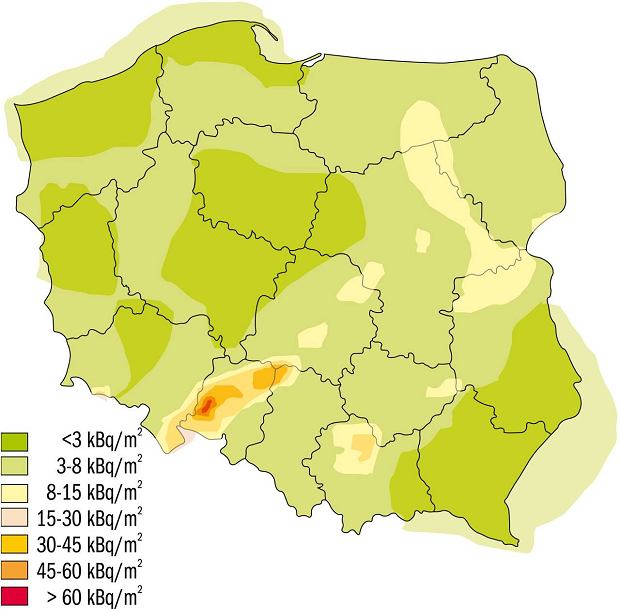
Iodine-131 and its Effects
Iodine-131, the main threat to children, is fortunately a short-lived isotope with a half-life of 8 days. Most of it entered the body through food, especially milk. Children given stable iodine early and who did not drink fresh milk likely received up to five times less iodine-131.
In Belarus, Ukraine, and Russia, where the action of administering stable iodine was either not covered at all or covered very late, an increase in thyroid cancer incidence was observed.
Data for Poland are divergent: some studies do not show an increased incidence of this cancer, while others report an increase.
Radiation Dose Received
According to the United Nations Scientific Committee on the Effects of Atomic Radiation (UNSCEAR), each Pole received an average radiation dose of 0.3 mSv in the first year after the Chernobyl disaster.
Over the next 70 years, they will receive an additional 0.9 mSv. During the same period, natural radiation will cause each Pole to receive a dose of 170 mSv.
Such small doses most likely have no effect on the population’s health. It’s worth saying that this is a small dose compared to natural radiation exposure over a lifetime.
Should We Be Worried in Poland?
Do we have reason to be concerned? The expert reassures that the memento of Chernobyl is not hypothyroidism or hyperthyroidism.
Chernobyl was associated with an increase in thyroid cancer incidence, but the fact that more and more people in Poland complain about thyroid gland problems is a separate issue. Prof. Milewicz explains,
We’re not iodine deficient, and the incidence has more to do with autoimmunity, factors that immunize the thyroid, causing chroinic autoimmune thyroiditis that eventually leads to hypothyroidism.
Diagnostics and Access to Tests
According to Dr. Tomkalski, the greater number of thyroid diseases is related primarily to better diagnostics, but also to easier access for patients to tests, also at the patient’s request.
This means we cannot speak with certainty about an epidemic of thyroid diseases or an epidemic of thyroid diseases related to the Chernobyl power plant accident.
All thyroid cancers, all other diseases, such as hypothyroidism or Hashimoto’s disease, are now diagnosed many years earlier. It’s not a matter of a year, but many years,
emphasizes the endocrinologist. He adds that in six percent of the population, there are so-called thyroid microcancers that will never progress to aggressive cancer.
Situation in Ukraine
The expert believes that a similar situation may also apply to Ukraine.
I think that the greater number of thyroid diseases in Ukraine may also be related to easier access to diagnostics, especially compared to 1986.
I believe it is important to understand that while the Chernobyl incident did lead to an increase in thyroid cancer cases, the overall increase in thyroid diseases in Poland and Ukraine is not necessarily directly linked to the incident.
Better diagnostics and easier access to tests have led to more diagnoses, but this does not necessarily mean there is an epidemic of thyroid diseases.
References:
- https://www.focus.pl/artykul/skutki-zdrowotne-awarii-w-czarnobylu
- https://www.kresy.com/ns,Czarnobyl-wybuch-elektrowni
- https://pl.wikipedia.org/wiki/Katastrofa_w_Czarnobylskiej_Elektrowni_J%C4%85drowej/


